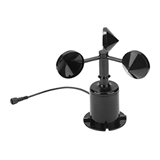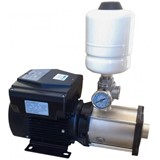From dial-up services to broadband and mobile wireless internet services, subscribers have migrated to the technology that can deliver what they need - faster, cheaper and larger downloads. Next up will be the $43 billion fibre-based National Broadband Network (NBN), and advanced 4G LTE wireless networks that fuel further growth.
In 2009-10, the Internet Service Provider industry will generate revenue of $5.9 billion with net profit after tax of close to $380 million. It has been a tremendously successful decade, considering that prior to 2000 the industry struggled to turn a profit.
The number of fixed broadband subscribers has increased by an average of 22.8% a year over the past five years. Total data downloads have expanded by 60% per year over the same period. There has been rapid migration from dial-up connections to broadband, facilitating higher use and more revenue. Despite access prices falling, the move to speedier services and larger download limits has meant more revenue for ISPs.
Over more recent years mobile wireless internet has surged, with subscriber numbers more than doubling on average each year over the past five years. This growth has come at the expense of fixed dial-up and broadband connections, which have been in decline since peaking in 2007 at 6.8 million connections.
It is now time for the NBN to foster further industry growth, with the potential to deliver larger download capacity that is faster and cheaper. The Federal Government plan outlined in April 2009 involves the establishment of an NBN company (NBN Co.), which will be at least 51% government owned, to oversee the network build and act as the wholesale entity. NBN Co. will sell network access and capacity to telcos for resale to businesses, consumers and government agencies.
The actual cost of building the network could be less than the $43 billion price tag if state governments, local councils, universities, the telcos and other fibre-owning organisations cooperate in the rollout of the NBN. The lower the final cost of building the NBN, the lower the final retail price and the greater the demand for NBN services.
This would deliver further scale economies and greater competition. Importantly Telstra has signalled its cooperation with the NBN build, acknowledging the inevitable migration of subscribers from Telstra's fixed-line copper network to the more advanced NBN, should the two coexist.
The successful rollout of the NBN is expected to underpin average industry revenue growth of 9.0% a year over the five years to 2014-15, with ISP revenue reaching $9.1 billion by 2015. Wired and wireless connectivity of 100+ Mbps will facilitate mass market adoption of VoIP and IPTV, smart grids, true e-health and e-learning, innovative online shopping and many other applications.
Ultimately, the establishment of 4G networks and the NBN will increase consumer and business reliance on communications services.














